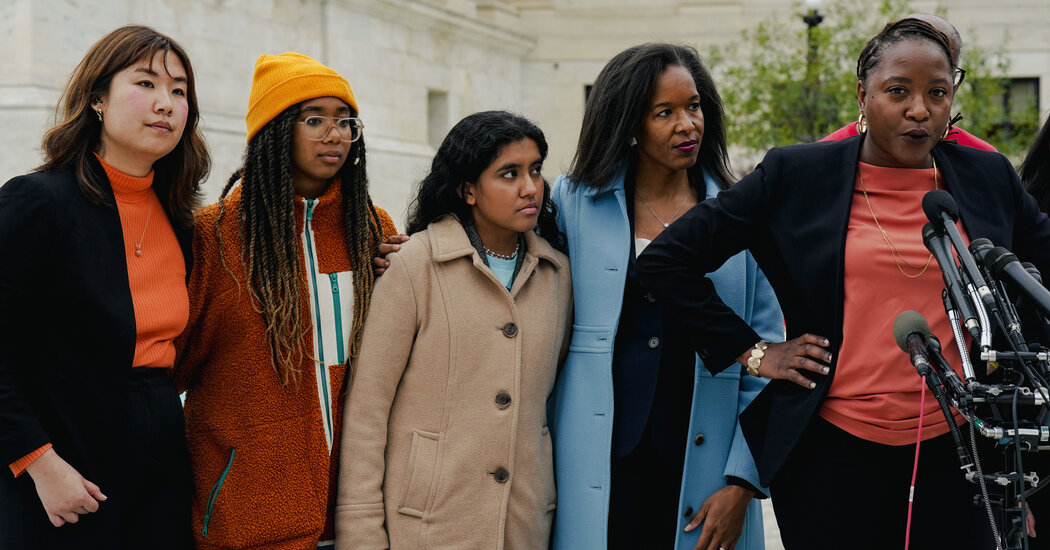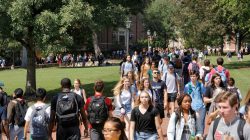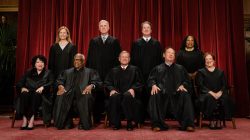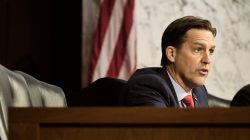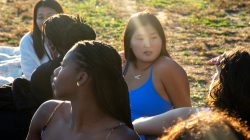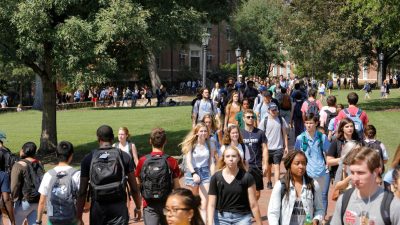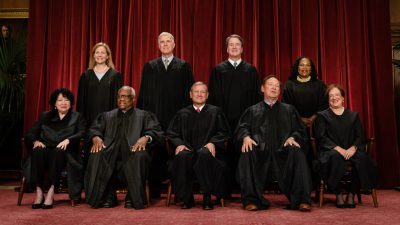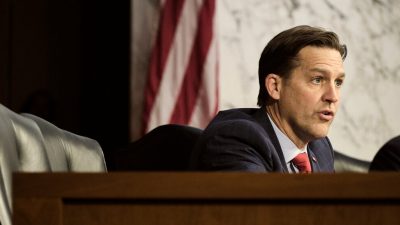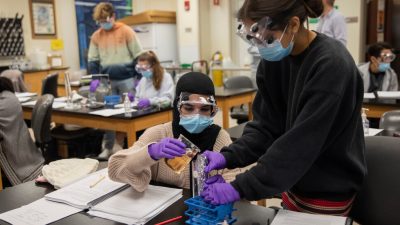WASHINGTON — The Supreme Court on Monday appeared ready to rule that the race-conscious admissions programs at Harvard and the University of North Carolina were unlawful, based on questioning over five hours of vigorous and sometimes testy arguments, a move that would overrule decades of precedents.
Such a decision would jeopardize affirmative action at colleges and universities around the nation, particularly elite institutions, decreasing the representation of Black and Latino students and bolstering the number of white and Asian ones.
Questioning from members of the court’s six-justice conservative majority was sharp and skeptical. “I’ve heard the word diversity quite a few times, and I don’t have a clue what it means,” Justice Clarence Thomas said. “It seems to mean everything for everyone.”
Justice Samuel A. Alito Jr. asked a similar question about the term “underrepresented minority.”
“What does that mean?” he asked, adding that college admissions are “a zero-sum game” in which granting advantages to one group necessarily disadvantages another.
If the court does away with affirmative action by the end of its current term, it would represent the second time in the space of a year that its conservative supermajority has jettisoned decades of precedent to overturn a policy that has helped define American life. But as its decision in June eliminating the constitutional right to abortion made plain, members of that majority have not hesitated to take bold steps on divisive issues.
A ruling against the universities would be further evidence of the court’s rightward lurch after President Donald J. Trump’s appointment of three justices, and it could raise fresh questions about whether the court’s approach to precedent threatens the stability of the law and the court’s own legitimacy.
Chief Justice John G. Roberts Jr., who views himself as the custodian of the court’s independence and authority, may have conflicting impulses in the cases argued Monday. He has long been critical of drawing distinctions based on race. His questions about race-neutral means of achieving diversity suggested that he might be pursuing a characteristically incremental path. That approach could limit the sweep of a decision rejecting race-conscious programs.
In general, two themes ran through questions from the court’s conservatives: that educational diversity can be achieved without directly taking account of race and that there must come a time when colleges and universities stop making such distinctions.
The court’s three liberal members put up a spirited defense.
Justice Sonia Sotomayor said “race does correlate to some experiences and not others.”
“If you’re Black,” she said, “you’re more likely to be in an underresourced school. You’re more likely to be taught by teachers who are not as qualified as others. You’re more likely to be viewed as having less academic potential.”
The Fate of Affirmative Action in America
Justice Ketanji Brown Jackson said it would be odd if admissions officers could consider factors like whether applicants were parents, veterans or disabled — but not if they were members of racial minorities. That has “the potential of causing more of an equal protection problem than it’s actually solving,” she said.
Justice Elena Kagan said she was worried about “a precipitous decline in minority admissions” if the court were to rule against affirmative action in higher education. “These are the pipelines to leadership in our society,” she said of elite universities.
Over the course of the argument, the justices discussed with seeming approval several kinds of race-neutral approaches: preferences based on socioeconomic status; so-called top 10 programs, which admit students who graduate near the top of their high school classes; and the elimination of preferences for children of alumni and major donors, who tend to be white.
Justice Amy Coney Barrett asked whether it would be permissible for minority students to write essays describing their experiences with race discrimination. Patrick Strawbridge, a lawyer for Students for Fair Admissions, the group challenging the programs, said that was fine.
“What we object to,” he said, “is a consideration of race and race by itself.” Personal essays are different, he said. “It tells you something about the character and the experience of the applicant other than their skin color,” he said.
Similarly, Mr. Strawbridge said, an Asian American student might write about traveling to a grandparent’s home country.
Chief Justice Roberts said that such a student would not be a “very savvy applicant” because “the one thing his essay is going to show is that he’s Asian American, and those are the people who are discriminated against.”
Seth P. Waxman, a lawyer for Harvard, later said that it did not discriminate against Asian American applicants, though he did not contest that on average they received lower ratings for personal qualities at an early stage of the admissions process.
Mr. Waxman said that many factors contributed to whether students were admitted.
“Race for some highly qualified applicants can be the determinative factor,” he said, “just as being an oboe player in a year in which the Harvard-Radcliffe Orchestra needs an oboe player will be the tip.”
Chief Justice Roberts seemed taken aback. “Yeah,” he said. “We did not fight a Civil War about oboe players. We did fight a Civil War to eliminate racial discrimination, and that’s why it’s a matter of considerable concern.”
Justice Kagan asked Mr. Strawbridge whether universities could put a thumb on the scale in admissions decisions to ensure that men were adequately represented in an era in which most college applicants are women.
Mr. Strawbridge said that question would be governed by a less demanding legal standard than the one that applies to distinctions based on race.
Justice Kagan said the differing treatment “would be peculiar,” adding that “white men get the thumb on the scale, but people who have been kicked in the teeth by our society for centuries do not?”
Mr. Strawbridge said there should be no preference for white men, but “men could perhaps” gain an advantage.
Elizabeth B. Prelogar, the U.S. solicitor general, argued in support of the universities in both cases. “When students of all races and backgrounds come to college and live together and learn together, they become better colleagues, better citizens and better leaders,” she said.
She said that kind of educational environment is particularly vital to the military and that other institutions, including the Supreme Court, still had work to do.
In the two weeks of arguments that began Monday, she said, 27 lawyers are scheduled to argue. “Two are women,” she said, “even though women today are 50 percent or more of law school graduates. And I think it would be reasonable for a woman to look at that and wonder, Is that a path that’s open to me, to be a Supreme Court advocate?”
The court has repeatedly upheld affirmative action programs at colleges and universities, most recently in 2016, saying that educational diversity is a compelling interest that justifies taking account of race as one factor among many in admissions decisions.
When the court agreed in January to hear the two affirmative action cases, it consolidated them and said it would hear a single hour of arguments. The court decoupled the cases after the arrival in June of Justice Jackson, who recused herself from the Harvard case in light of her service on one of the university’s governing bodies.
The two cases are not identical. As a public university, U.N.C. is bound by both the Constitution’s equal protection clause and Title VI of the Civil Rights Act of 1964, which bars race discrimination by institutions that receive federal money. Harvard, a private institution, is subject only to the statute.
In the North Carolina case, the plaintiffs said that the university discriminated against white and Asian applicants by giving preference to Black, Hispanic and Native American ones. The university responded that its admissions policies fostered educational diversity and were lawful under longstanding Supreme Court precedents.
The case against Harvard has an additional element, accusing the university of discriminating against Asian American students by using a subjective standard to gauge traits like likability, courage and kindness, and by effectively creating a ceiling for them in admissions.
Both cases were brought by Students for Fair Admissions, a group founded by Edward Blum, a legal activist who has organized many lawsuits challenging race-conscious admissions policies and voting rights laws, several of which have reached the Supreme Court.
In 2016, the Supreme Court upheld an admissions program at the University of Texas at Austin, holding that officials there could continue to consider race as a factor in ensuring a diverse student body. The vote was 4 to 3. (Justice Antonin Scalia had died a few months before, and Justice Kagan was recused.)
Writing for the majority, Justice Anthony M. Kennedy said that courts must give universities substantial but not total leeway in devising their admissions programs. He was joined by Justices Sotomayor, Ruth Bader Ginsburg and Stephen G. Breyer.
Six years later, only one member of the majority in the Texas case, Justice Sotomayor, remains on the court.
The Texas decision essentially reaffirmed Grutter v. Bollinger, a 2003 decision in which the Supreme Court endorsed holistic admissions programs, saying it was permissible to consider race as one factor to achieve educational diversity. Writing for the majority in that case, Justice Sandra Day O’Connor said she expected that “25 years from now, the use of racial preferences will no longer be necessary.”
But several conservative justices said they doubted that universities would ever voluntarily stop taking account of race.
“When does Harvard anticipate this will end?” Justice Neil M. Gorsuch asked. Mr. Waxman responded: “Harvard’s view about when doesn’t have a date on it.”
Justice O’Connor’s statement suggested a deadline of 2028. Justice Brett M. Kavanaugh said the cutoff was looming.“The current admissions cycle is for the class of ’27. It’s going to be too late to do anything about that cycle. The next is the class of ’28.”
The court’s decisions in the two new cases — Students for Fair Admissions v. Harvard, No. 20-1199, and Students for Fair Admissions v. University of North Carolina, No. 21-707 — will probably land in June.
Sumber: www.nytimes.com
